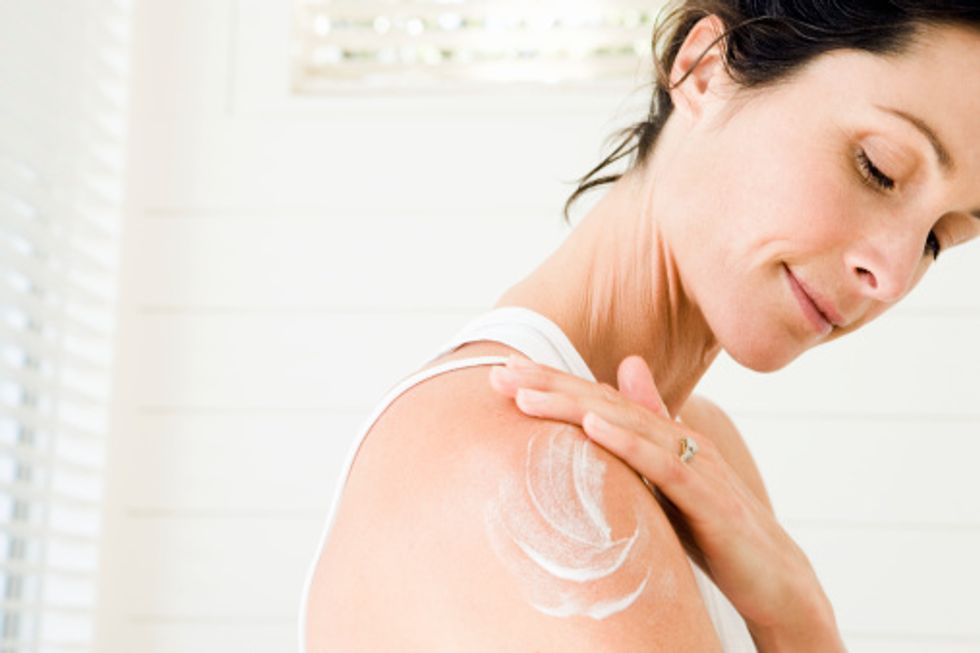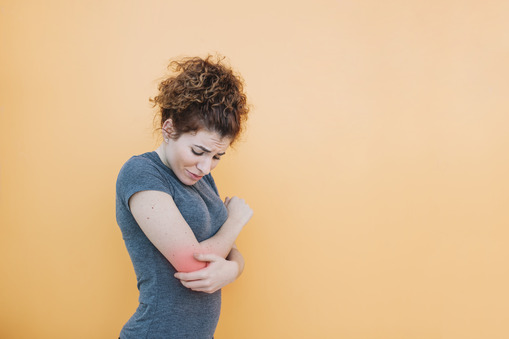You may have heard of shingles but were never quite sure what it is exactly. Perhaps you saw a commercial for some medication to help with the issue or know someone who has suffered from shingles. Before you start a scary or fruitless self-diagnosis with a rampant internet search, here are some bits of info you need to know about shingles. Understanding the cause, condition, and care can be a huge relief when you’re unclear if you are at risk.
What Is Shingles?
 Via healthool.com
Via healthool.com
Essentially, shingles is a rash, and a painful one at that. As per WebMD, “It is caused by the varicella zoster virus and is also called herpes zoster” Appearance-wise, the rash “usually appears in a band, a strip, or a small area on one side of the face or body.”
As per Medical News Today, these bands are called dermatomes. “These dermatomes correspond to a single sensory nerve, which is why infection causes isolated skin lesions rather than a body-wide rash and nerve pain.”
How/Why Do You Get it?
According to Medical News Today, “Shingles is caused by the same virus that causes chickenpox. After recovery from chickenpox, the virus remains in the body and lies dormant in the central nervous system. Given the right conditions, the herpes zoster virus can “reactivate” (or wake up from hibernation) and travel down nerve fibers to cause a new active infection.”
Some triggers to cause shingles include aging (half of all cases occur in men and women 60 years and older), disease, stress, medications, and injury. If you’ve never had chickenpox, it’s impossible to get shingles.
Symptoms

As per WebMD, at first, feelings of light sensitivity, headaches, and flu-like symptoms, sans fever are generally the first stage. Some people experience weakness or dizziness as well. Then comes the tingling and itching sensations followed by a small rash a few days later. Soon the rash will form into blisters which will fill with fluid then crust over. In about 2-4 weeks the blisters will heal and the ordeal will have run its course.
According to Medical News Today, some other symptoms which have been reported include:
- Chills
- Nausea
- Upset stomach
- Joint pain
- Swollen glandsIf shingles breaks out on the face, particularly near the eyes, contact a doctor right away. Symptoms of shingles when it attacks the face include:
- Droopy eyelids
- Difficulty moving muscles in the face
- Hearing loss
- Problems with eye motion and vision
Treatment

Antiviral medications are the usual course of treatment for those suffering from shingles. The sooner the meds are prescribed, the faster and less painful the course of illness will be.
As per Mayo Clinic, these medications include:
Acyclovir (Zovirax)
Valacyclovir (Valtrex)
Famciclovir (Famvir)
To relieve pain, doctors may also recommend creams or numbing agents to reduce discomfort. Patients can also take oatmeal baths, apply cold compresses, use calamine lotion, etc.
Most people will experience a shingles breakout only once in their lifetime. As per the Centers for Disease Control and Prevention (CDC), one of every 3 people in the U.S. will develop shingles in their lifetime and there are an estimated 1 million cases reported each year.
Prevention
The CDC recommends a vaccination against the virus. “The only way to reduce the risk of developing shingles and the long-term pain from post-herpetic neuralgia (PHN) is to get vaccinated. CDC recommends that people aged 60 years and older get one dose of shingles vaccine. Shingles vaccine is available in pharmacies and doctor’s offices.”










